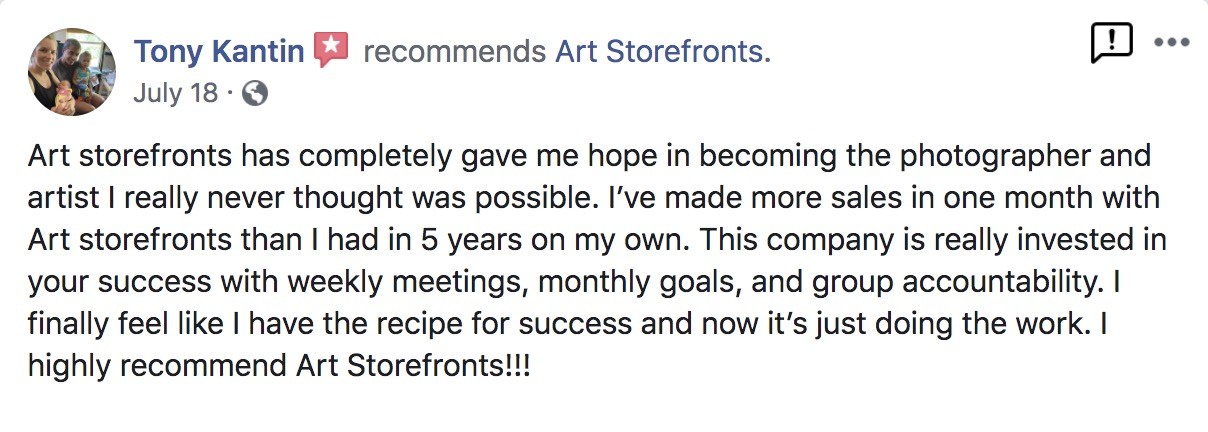The journey we took to learn how to sell art online, the problem in the industry we’ve fixed, and how our unique combination of software, education, and community is leading artists down a path to creative and financial success.
Are you trying to sell art online?
Have you tried to sell art online before?
Are you thinking about trying to bring your offline art business online in the near future?
We have talked to many, many artists that fall into these categories.
And whether their experiences with selling art online are rooted in the past, present, or future, they all have one thing in common: they’re trying, but not succeeding.
The thoughts we hear most often include:
- Despite trying, I’ve never sold anything from my own website
- I have sold a few pieces here and there, but nothing substantial and certainly nothing consistent
- I’m questioning how to sell art online, and if art even sells online at all!
And then you’ve got the folks on marketplaces, and they tell us:
- I’m on Etsy and making a few sales, but nothing significant enough to base a career on
- I gave Fine Art America a shot and got no traction
- I’m looking into other art marketplaces and hoping they will work, I think I just need to find the right one
Whether it’s Zenfolio, Smugmug, Photoshelter, FASO, WordPress, Squarespace, or another “portfolio” website provider, most of the artists we talk to have made an attempt (or two, or three) at selling art online and walked away believing – despite all market data pointing to the contrary – that art “just doesn’t sell online”.

And I’m guessing that if you have found this article and read this far, you, too fit into that group – the artist that’s had enough “trying” and is ready to get to the “succeeding” part.
But let me be clear, I am not here to tell you that all you need to do is build a website with Art Storefronts to succeed. That the day you flip the switch from “them” to “us” you’ll start selling your art daily.
What I am here to tell you is that selling art consistently online is very much possible, given the right software, the right marketing education, and the right community.
We’ve made it our primary objective, mission, and obsession to master all three of these elements.
The software, the education, the community.
An ecosystem built to enable artists to live their dream of making a consistent living solely from their art.
The bad news? The trying isn’t done for you, there is no silver bullet that will change your life overnight.
The good news: we believe success is within reach for artists that fully leverage the system we’ve built.
So let’s get into it. The how and the why of Art Storefronts – our journey to learn how art is sold online, the problem in the industry we’ve fixed, and how our unique combination of software, education, and community is leading artists down a path to creative and financial success.
It all started with a bit of research…
Our Market Research

From the beginning, we wanted a clear and honest understanding of the state of the industry.
So we talked with and visited artists, photographers and art galleries – tens of thousands of them over the years in every niche imaginable and located all across the US, Canada, and overseas.
We looked at their websites, got into their sales reports, broke down the data.
This process continues to this day, and we continue to reach the same conclusion:
Nobody — and we mean NOBODY – has had any consistent success selling art from their own websites.
But what about this popular photographer, or that viral artist, or this well-known gallery? Aren’t they killing it online?
Sure, there are outliers. Jordan could dunk from the free throw line, Zuckerberg became a billionaire working in his pajamas, J.K. Rowling wrote Harry Potter in a coffee shop.
But what we’ve found is that these examples of rockstar artists are not the norm. Not even close.

We have spoken to artists that sell well over $100k in offline sales yearly, artists that have over 500k fans on Facebook, and artists doing tremendously well that don’t even have websites (who have only tried selling through marketplaces).
And none of them are making any significant progress selling online!
We couldn’t believe it.
It became a true obsession to us – why is nobody, even very successful artists and photographers, able to make a consistent living through their own websites?
And why is no one stepping up to the plate with software to help make it happen?

Our research led us to one conclusion: these artists are not able to find a solution, because they haven’t fully understood the problem.
The Industry “Problem”
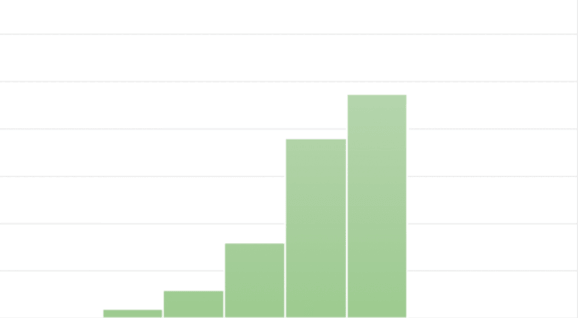
We’ve all witnessed the evolution of commerce in the digital age, and the art market is a part of that.
Our executives and stakeholders, who have many, many years of experience within the art & photo space, saw and experienced a problem everywhere:
Art wasn’t just available for sale online, it was booming.
And there was market research to back it all up.
In 2013 the BBC announced in this article that more art was now sold online than in galleries.
The value of the online art market was $1 billion in 2013, on track for $2.64 billion in 2015 (via Hiscox Report). Then, in 2015, they revised the projections due to growth exceeding their expectations, projecting it to be worth $6.3 billion in 2019. Great! The online market is exploding.
But it’s also cannibalizing offline sales.
This meant that those well-positioned to succeed online would increasingly benefit from this industry disruption, while those poorly-positioned would increasingly struggle.
So the question we asked ourselves is, how can we help position everyone to succeed?
We started by investigating where exactly all the art was being sold online.
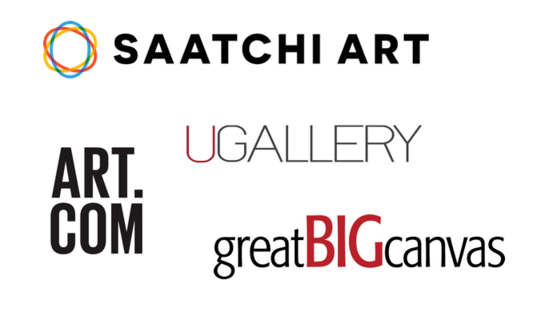
A large portion was being sold by large art retailers such as Art.com, SaatchiArt, uGallery, GreatBigCanvas, to name a few.
After doing a heavy review of their websites, we made a key discovery.
We discovered that the buying experience being provided by these leading online retailers were vastly different when compared to the standard websites utilized by artists and photographers.
For example, the top online art retailers displayed live previews on different media types, they provided in-room visualization tools, framing tools, easy sharing tools, and much, much more (for a comprehensive list, check out The Top 20 Critical Features to Sell Art Online).
Overall, it was a very interactive, engaging, and informative buying experience, all thoughtfully designed to remove “buyer friction” and convert a casual visitor into a buyer.
Art just happens to be a product with inherently high buyer friction.
So these companies each invested millions to develop their own technology in order to remove it.
Every action they took was completely logical – they tested, looked at the data, and improved. They copied each others learnings. They all started selling more and more.
Meanwhile, during all of this evolution and growth, artist and photographer websites were stagnating.
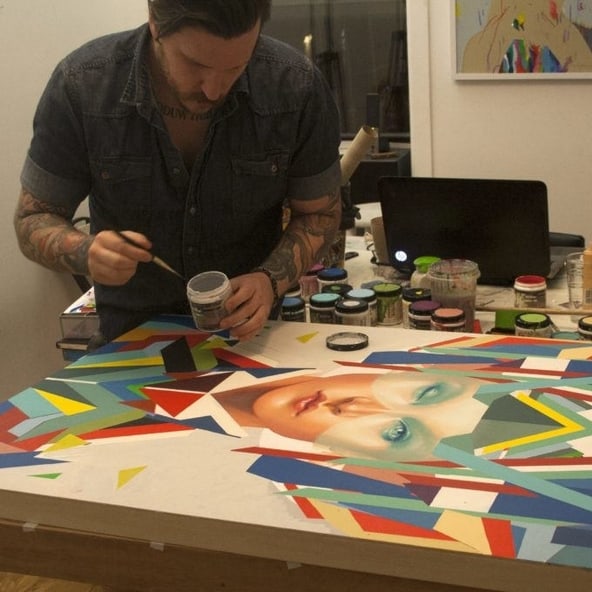

The typical artist/photographer website provides a buying experience that’s confusing and clunky at best.
An experience that looks like it was designed for everything BUT converting visitors into buyers. It’s hard to find things, it takes many clicks to add simple products to the cart, there are no visualization tools, and so forth.
As such, it is not surprising that sales performance on these websites is a major problem. These websites really only serve as a glorified business card where people could view images and maybe, with some difficulty, place an order.
Not ideal, right?
It became clear to us that artists and photographers NEEDED to provide a buying experience that was completely on par with the leading retailers if they ever hoped to start making consistent sales.
An experience that was designed from the ground up to remove buyer friction, and with the intention of converting visitors into buyers.
So the solution is clear: just build a website that takes care of these things.
Except that it would be impossible for any artist or photographer to develop this technology on their own and still earn a return on the investment.
No, the path was clear. An organization needed to step up, make the investment, put in the time, and build sophisticated software that would be available to all artists looking to compete with the big guys.
We had our work cut out for us.
Our Mission + How We Got Here

So our mission became to build an eCommerce platform with this feature-rich, interactive buying experience that artists and photographers could use in order to compete on the same level, right on their own websites.
We saw a future in which there would be no difference in the buying experience between one of the leading art websites, and one of our customer’s websites.
In fact, we wanted the experience to be even better.
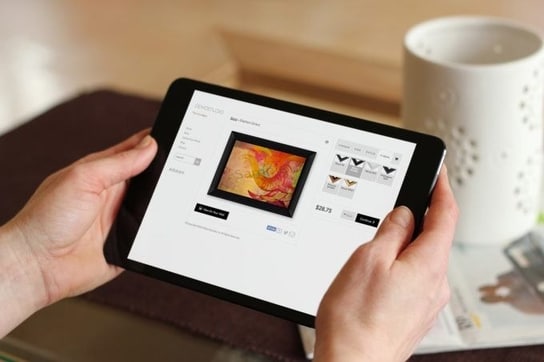
Art Storefronts was established in 2013 in order to solve this problem and enable professional artists and photographers to start making consistent sales directly from their own websites. To live their dream.
To do it, we needed to build one hell of a team.
Assembling a Double-Threat Team
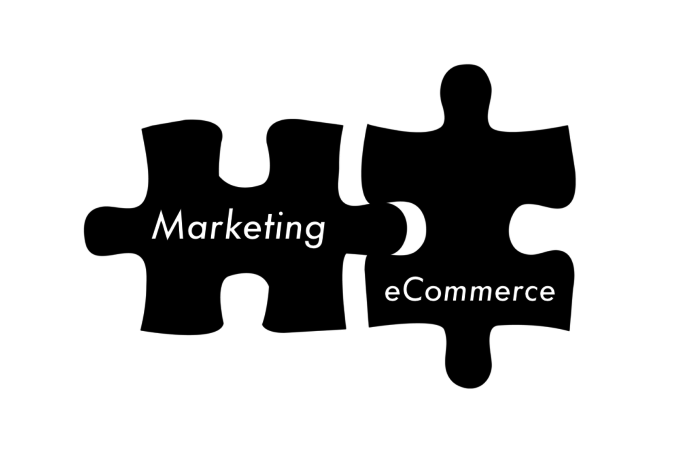
Knowing that a solution required serious experience in both (1) art/photo marketing and (2) eCommerce software, we assembled a robust team of experts in both fields.
We couldn’t just be a software company that strictly provided a website – those companies already failed at solving the problem.
The industry didn’t need another website provider.
And we also couldn’t just be a marketing company, because our core product was itself software (eCommerce websites).
We needed both as core competencies. Specifically, we needed marketing experts to guide the software experts and build a comprehensive product that would solve the problem of consistent online art sales.
So this was our approach, and it was a different approach than any other company before us.
And so this double-threat team went to work.
The Initial Launch

We completed our software and officially launched it in November 2014.
Needless to say, after only a short period of time, some of the results that came in were epic.
We had artists and photographers who previously sold next to nothing through their own websites, who transitioned their site over to Art Storefronts, and immediately began selling thousands in their first month.
Photographers like Mike Winsor began making sales daily. Artists like Bill Stidham sold over $7,000 in his first month!
It became clear pretty quickly that we had something special.

These examples of success aren’t the result of some mysterious magic formula, they can be precisely, scientifically measured.
Performance improved because their old website delivered an extremely low (or 0%) conversion rate, while our software delivered an extremely high conversion rate.
Don’t worry if we’ve lost you a little bit – a “Customer Conversion Rate” (“CCR”) is nothing more than the percentage of your total site visitors that make a purchase.
By implementing the state-of-the-art features described in this post, we were able to deliver a whoppingly higher conversion rate!
But like I said earlier, there are no silver bullets.
Some artists that already had a following profited nicely from their switch to Art Storefronts, but it wasn’t all smiles and high fives yet.
While some saw amazing results, others of our customers did not. In fact, they saw crap results.
So we had some more work to do still.

The question was this: How could there be such a dichotomy when everyone was using the exact same software and the exact same tools?
- Great Artist A + Best Software = Success!
- Great Artist B + Best Software = Fail.
Something was happening at a deeper level.
We solved the software problem, but the larger problem remained a mystery.
So, we tasked our marketing team with the responsibility of figuring out what was going on.

They put on their guru marketing hats and began a massive data collection. They dove into analytics, they interviewed customers, and spent countless hours trying to find reasons for the differences between the more successful and the less.
After a significant amount of time gathering and analyzing data, our marketing team was able to identify some key characteristics that distinguished each group.
The more successful artists:
- Had already identified a target audience that was emotionally connected to their subject matter
- Had already identified how and where they could “get in front of”, or market to, this audience
- Had a target audience that was already visiting their website (i.e. they had “traffic”)
These artists used an array of common marketing tactics that allowed them to expand their target audiences, and they properly setup their site to convert art sales:
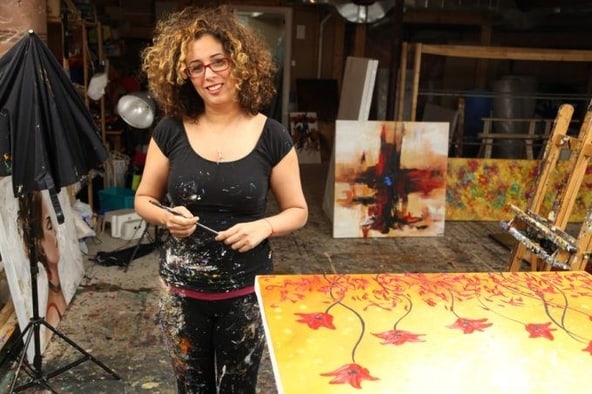
The less successful artists:
- Lacked clarity as to who their target audience really was and were uninformed about how to formulate and execute an overall business strategy that would attract, maintain, and expand their target audience.
- Did little marketing, didn’t realize how much time they should be spending on marketing, and were completely uninformed of the successful tactics that other artists were commonly using. They largely wasted time doing things that we already knew would not work.
- Had very little traffic, or no traffic at all, as seen in their web analytics.
Of those who did have traffic, they were completely unaware of industry best practices, and therefore made key setup mistakes that significantly reduced conversion rates. To name a few:
- They lacked trust signals – no professional logo, no phone number, no clear return policy, no satisfaction guarantee, etc.
- They killed the value of our high-converting site themes by changing the colors and arrangements in ways that went against our research learnings.
- They had complicated navigation structures (sometimes 2 or 3 rows of navigation to read) and no organization by subject matter. As such, once you reached the site, it was very difficult to find what you wanted.
With this data, we were able to conclude that an artist or photographer could have the best converting software in the world – software that is on par with the leading retailers who are selling billions – and that would still not be enough to make them successful.
This was the problem with Artist B mentioned above (Great Artist B + Best Software = Fail).

The key piece Artist B was missing was the information and know-how to start, build, and grow an online art business based on proven techniques and practices.
Adding that key piece into our equation, things start to make more sense:
- Great Artist A + Best Software + Utilizes Best Practices = Success!
- Great Artist B + Best Software + Is Educated On & Utilizes Best Practices = Success!
The Education Component

From that day on, we weren’t just a software company – we became a marketing education company.
Our customers’ success is our success. And for our customers to become successful, they need to know how art is sold online, and they need to implement best practices that are already working for other pros.
So we hired more people and doubled-down on our efforts.
We built a robust, step-by-step “Success Plan” that Artist B could easily follow.
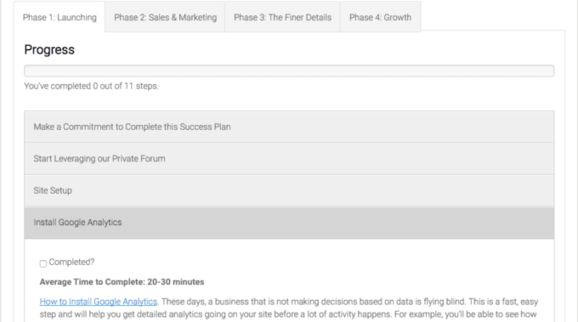
Now, Artist B can maximize time efficiency, empowering them to focus only on things that were already proven to work.
And even more importantly, the Success Plan plan prevents them from wasting years of their professional lives doing things that have already been proven to fail.
To this day, the Success Plan is a dynamic resource – one that’s updated all the time as we uncover new strategies and techniques that are working for others.
Next up, Success Content on the Blog.
Whether it’s our theory on the Romantic vs. the Caveman art seller, video walkthroughs, or case study write-ups, we keep the Art Storefronts Blog stocked weekly with new, powerful content.
When we run a case study and learn something from it, we share it! Publicly, for free, and usually with a few funny GIFs included.
We wrote about how our Lead Capture Tool dramatically increased email opt-ins for Mike Winsor. And how we optimized SEO on an Artist Website and dramatically increased traffic and sales.

And the case studies don’t just die on the Blog, they actually get worked into the software.
When we ran that study mentioned above, about the increase in email opt-ins, we built that feature right into the software and made it available to everyone.
A win for one artist today, a win for everyone on the platform tomorrow.
The Results After Implementing the Education Component
Shortly after launching our Success Plan, we began seeing great results from the “Artist B” group.
Those who completed the Success Plan educated themselves and began using our software and their new knowledge in ways they never did before. As a result, they started reaching success levels never seen before.
The enthusiasm reached an all-time high (see video below).
The Education component was clearly working. Awesome!
Yet we still weren’t quite ready to pour the champagne. There was still one lingering void left to fill.
Despite all the gains from the Educational component, our customers were still needing even more help.
This is because by nature, each art business is just a little different from others, and each encounters its own unique needs and challenges. And so as every artist and photographer began executing on the Success Plan as well as the continual Success Content, questions would arise, such as:
- “Great advice! But given the nuances of my business, should I do it this way, or that way?”
- “Has anyone been in this situation before…?”
- “Is there a best practice for the specific situation I am encountering? It’s not covered in your article!”
For many artists and photographers, these unanswered questions prevented them from executing on the Success Plan, and subsequently blocked them from success.
Extra points to whoever can remember the final component from the intro to this article…
The Community Component

It became clear that we needed to build in a community that would foster communication between our customers and provide a supportive backbone for all.
So we launched our #SmallWins Facebook Group – not for technical support, but for ongoing, high-level art marketing and business discussion.
An exclusive venue not available for public viewing where our customers could discuss and collaborate on the Success Plan and Success Content and get the extra guidance they needed.
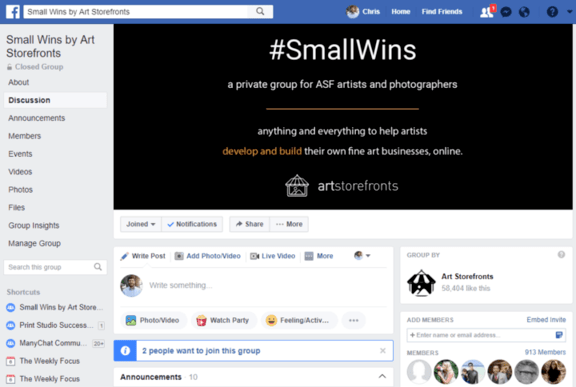
The collaboration that goes on in the group is unprecedented. Artists and photographers are able to share their thoughts and ideas with each other, ask for advice, give advice, and discuss their marketing efforts directly with the Art Storefronts marketing team.
Altogether, we’re proud to say today that this art marketing community has become even more than what we originally envisioned. Customers are getting help on a wide variety of industry topics, which has added an entirely new level of value to our members.
It’s the final key that unlocked the successful model for Art eCommerce.
Where others are focused entirely on software, we discovered it to be only one of the legs of a three-legged stool.
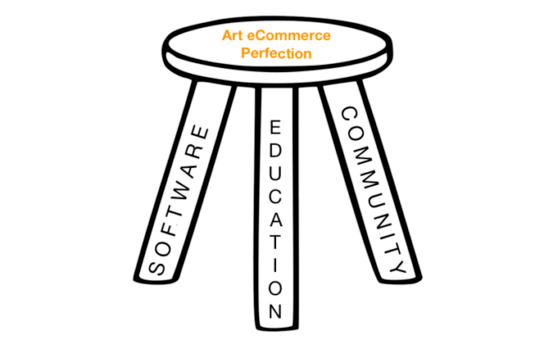
Software + Education + Community = The SolutionWith the combination of Software, Education, and Community in place, and after a long and arduous journey, we can now say that the original problem we set out to fix has been solved.

Artists and photographers are now using Art Storefronts to sell directly from their websites, many in very high volumes, some even surpassing six figures in their first year.
Others are making their first online sales and are on the path to building a successful art business in the future.
Even more importantly, everyone is soaking up the education, on their own time, and are also learning how they can leverage the community.
Some are quicker to find success than others, but everyone is now on a guided path towards success.
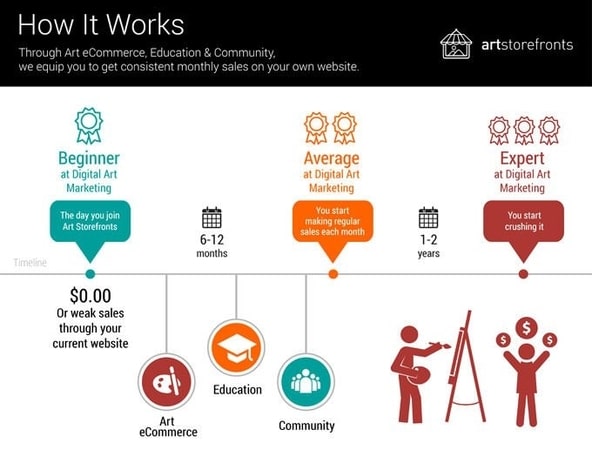
So far as we know, we are the only place on the planet where artists are actually making sales directly from their own websites. We are also the only company that has setup an ecosystem completely dedicated to everything selling art, where artists and photographers get the guidance and support structure they need to reach increasing levels of success. Regardless of whether they are dedicated full time to selling art, or just wanting to add another revenue stream.
Well, that’s the journey we took to master how to sell art online.
Regardless of where you are on your Art Business journey, we hope that learning about our journey will help light your path.
Our mission is to spread this knowledge and empower artists everywhere to succeed. If our story is something you think someone else in the art industry will benefit from, please pass it along.
The truth is, there is no better time than now — and it has never been easier than it is now — for artists to take advantage of the online space, immediately connect with their target customers who have an emotional connection with their subject matter, and sell art to them directly.



























